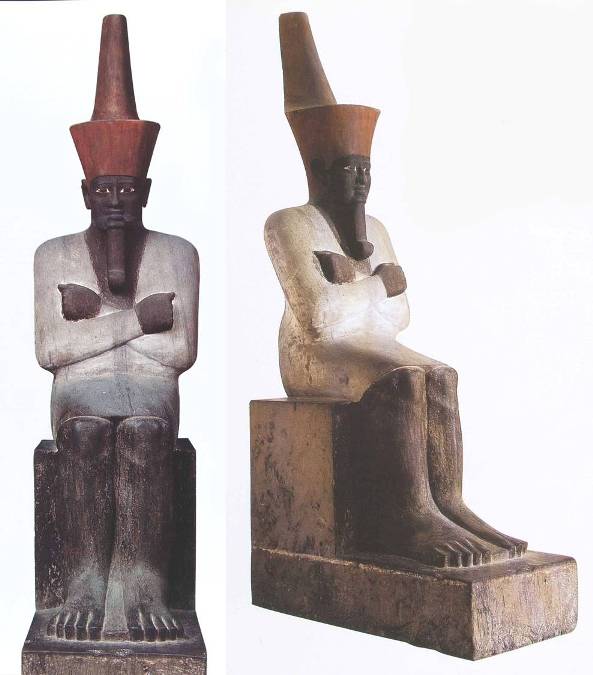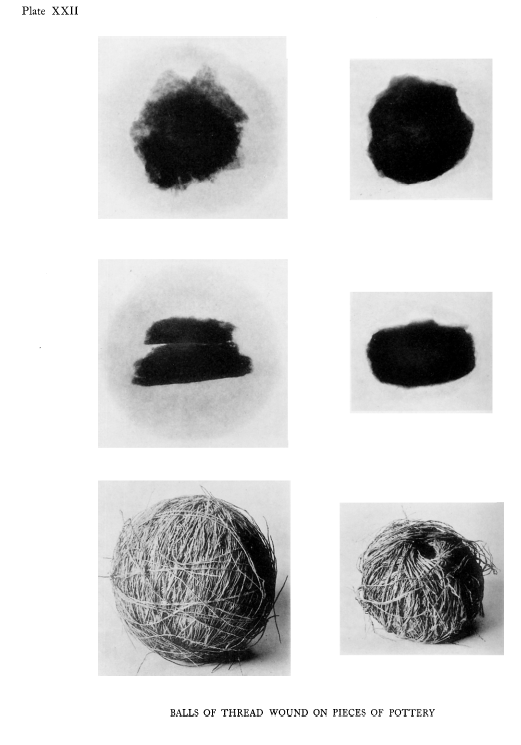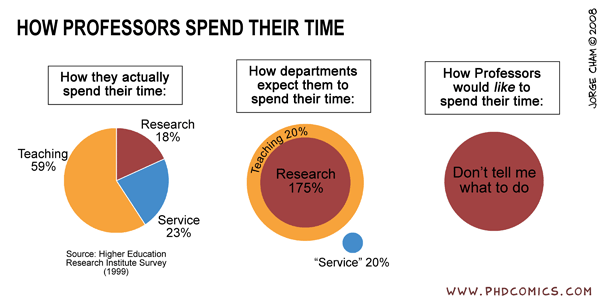This is the FINAL post about what I’ve detailed in this, this, this, and especially THIS post.
After I posted the 4th part, and as I read through it as I posted it, I realized that my argument is valid, based on the evidence I had available to me. I may not have done an exhaustive search of declassified documents, but the support is there. One complaint from one reviewer was that Breasted was “such a famous raconteur” that the content of his letters can be misleading. I absolutely agree and agree that finding other evidence would be useful here. However, his letters home were also meant as his field journals, so one might also argue that they could be taken literally. Although, if you use a field journal or field diary, you do always want to check contextual sources.
I lamented this particular source issue distinctly throughout the researching and writing this particular paper, but thought that the evidence was strong enough that I wanted to get this scholarship out there. To be clear, the editor of the Top Journal I submitted to was extremely interested in this paper and approached me directly to ask me to submit it a second time. The editor was kind, supportive, and encouraging throughout the entire process.
After the short conclusion, below, I will post all of my works cited.
Thank you for continuing to read this. I’d love to hear any thoughts you have. Here is the conclusion:
Conclusions
Breasted, like other archaeologists before him, was used as a spy by the British Army to gather important local intelligence after the Great War. By his own telling, this work was secondary to his journey across the desert, but it is clear that intelligence gathering was instead a central task. In his letters, Breasted downplayed this work for fear of being discovered, but he knew that the main purpose of his expedition was intelligence. In the tumultuous post-war environment, archaeologists had unprecedented access and influence in the areas in question, and Breasted and Allenby used the situation to their advantage. Breasted collected antiquities and they now populate museums around the world (see Emberling and Teeter). On the other hand, the British government failed to implement their policies based on the important intelligence Breasted reported. Despite his protests, the Balfour Declaration, aimed at giving a national home to Jewish people in Palestine, was included in the peace documents for the Ottoman Empire and the British Mandate in Palestine. Almost instantly, there were serious troubles within the Mandate which caused issues not just for archaeological research in the area, but for political, economic, social, and cultural conflict for the last 95 years (see Petrie 1931-34). It seems clear that when Breasted returned and gave Allenby and Curzon information that did not fit their view point, they essentially ignored him and did as they had already planned to do.
Clearly for Breasted the mission began as a scientific one. He had written to his family on 29 February that “…the conclusion of the war was the moment to jump in, and reluctant as I was to leave home, I could not evade the duty of one more effort to put at least one American department of Oriental Languages in a position for scientific production like that of a department of Chemistry or Astronomy. I can see it is coming. …I think Ancient Times had a lot to do with it” (29 February 1920). That in the end it became more about politics than science was doubtless disappointing to Breasted, but he was a shrewd diplomat and he used every advantage he had to access the sites he needed to assess. The work put him in situations of unavoidable danger where the risks vastly outweighed the rewards.
Some authors have argued that it is dangerous to current field workers to highlight the work that archaeologists have done as spies. But it is these angles that are crucial not only to understanding scientific lives, but also to making the murky intelligence world a little clearer. The post-war intelligence world was elite, open, nebulous, and fraught with problems of budgets and support from the very governments they were supporting. Woodrow Wilson would not send operatives to gather intelligence; the British needed help but had no money. Not only did the situation allow opportunistic imperial governments a foothold in unbalanced political situations, but it also allowed resourceful scientists a chance at seeing and analyzing hard-to-access sites, and gathering artifacts that would soon be denied them under controlled regulations. That he had no intelligence training whatsoever did not seem to bother Breasted.
In the history of archaeology in the ancient Near East, Breasted is well-known for his work at the University of Chicago’s Oriental Institute and the now-well-established Epigraphic Survey. The story of the first Expedition of the Oriental Institute is unique in a number of ways. It was the first expedition of its kind for this brand-new institution. Many scholars study this first journey as exemplary and important, not just because of the new Oriental Institute, but also because of the political ramifications it had on archaeology. But the trip must be seen as more than an archaeological success—indeed, it must be seen as a political failure on the part of Britain and the US. Both countries could have used Breasted’s advice and warnings to change some of their anticipated policies, but they did not. The questions of why they ignored him, or what may have happened if they had not, are irrelevant right now. Breasted’s work as a scientist is crucial; his time as a spy was central to this expedition and to the attempt at policy-making in the Middle East. He was undoubtedly disappointed in the outcome of his work, and as far as we know, never attempted to help advise policy again.
___________
Works Cited (I’ve pulled these straight from the endnotes.)
*A note on the letters, they’re cited by date, but are all available online in a fabulous edited volume, provided by the Oriental Institute. Letters from James Henry Breasted to His Family, August 1919-July 1920. Ed. John A. Larson (2010).
Anthropology Today “From the Archives,” 21:3 (June 2005).
“Lawrence of Arabia as Archaeologist,” Biblical Archaeology Review (December 2013): online verson.
Jeffrey Abt, American Egyptologist: The Life of James Henry Breasted and the Creation of His Oriental Institute (Chicago, 2011).
Scott Anderson, Lawrence in Arabia: War, Deceit, Imperial Folly, and the Making of the Modern Middle East (New York, 2013).
Christopher Andrew, Her Majesty’s Secret Service: The Making of the British Intelligence Community (New York, 1986).
Christopher Andrew, The Defence of the Realm: The Authorized History of MI5 (New York, 2009).
Franz Boas, “Scientists as Spies,” The Nation 109: 2842 (20 Dec 1919): 797.
Gertrude Bell (published anonymously), The Arab of Mesopotamia (Basra, 1918).
Gertrude Bell, Review of the Civil Administration of Mesopotamia, Cmd. 1061, (London, 1920).
Charles Breasted, Pioneer to the Past: The Story of James Henry Breasted, Archaeologist, Told by his Son, Charles Breasted (New York, 1943).
James Henry Breasted, “The Battle of Kadesh: A Study in the Earliest Known Military Strategy,” in Investigations Representing the Departments: Semitic Languages and Literatures, Biblical and Patristic Greek, Decennial Publications, 1st series, vol. 5 (Chicago, 1904).
James Henry Breasted, “Report of the First Expedition of the Oriental Institute of the University of Chicago,” 1920.
David L. Browman, “Spying by American Archaeologists in World War I (with a minor linkage to the development of the Society for American Archaeology),” Bulletin of the History of Archaeology 21:2 (2011): 10-17.
Jeffery M. Dorwart, The Office of Naval Intelligence: The Birth of American’s First Intelligence Agency, 1865-1918 (Annapolis, Md., 1979).
Jeffery M. Dorwart, Conflict of Duty: The U. S. Navy’s Intelligence Dilemma, 1919-1945 (Annapolis, Md., 1983).
Geoff Emberling, ed. Pioneers to the Past: American Archaeologists in the Middle East, 1919-1920 (Chicago, 2010).
Geoff Emberling and Emily Teeter, “The First Expedition of the Oriental Institute, 1919-1920,” in Pioneers to the Past: American Archaeologists in the Middle East, 1919-1920, ed. Geoff Emberling (Chicago, 2010), 31-84
James Gelvin, “The Middle East Breasted Encountered, 1919-1920,” in Pioneers to the Past: American Archaeologists in the Middle East, 1919-1920, ed. Geoff Emberling (Chicago, 2010), 21-29.
James F. Goode, Negotiating for the Past: Archaeology, Nationalsim, and Diplomacy in the Middle East, 1919-1941 (Austin, 2007).
Susan Goodman, Gertrude Bell (Dover, N. H., 1985).
Charles Harris and Louis Sadler, The Archaeologist was a Spy: Sylvanus G. Morley and the Office of Naval Intelligence (Albuquerque, N. M., 2003).
Georgina Howell, Gertrude Bell: Queen of the Desert, Shaper of Nations (New York, 2007).
Susan Hueck Allen, Classical Spies: American Archaeologists with the OSS in World War II Greece (Ann Arbor, 2011).
Rhodri Jeffreys-Jones, In Spies We Trust: The Story of Western Intelligence (Oxford, 2013).
Henricka Kuklick, The Savage Within: The Social History of British Anthropology, 1885-1945 (Cambridge, 1993).
John A. Larson, ed. Letters from James Henry Breasted to his Family, August 1919-July 1920: Letters Home During the Oriental Institute’s First Expedition to the Middle East. Oriental Institute Digital Archives, No. 1 (Chicago, 2010)
G. J. A. O’Toole, Honorable Treachery: A History of US Intelligence, Espionage, and Covert Action from the American Revolution to the CIA (New York, 1991).
Flinders Petrie, Ancient Gaza I. Tell el Ajjul. British School of Archaeology in Egypt, 53 (London, 1931).
Flinders Petrie, Ancient Gaza II. Tell el Ajjul. British School of Archaeology in Egypt, 54 (London, 1932).
Flinders Petrie, Ancient Gaza III. Tell el Ajjul. British School of Archaeology in Egypt, 55 (London, 1932).
Flinders Petrie, Ancient Gaza IV. Tell el Ajjul. British School of Archaeology in Egypt, 56 (London, 1934)
David Price, “Anthropologists as Spies,” The Nation 271:16 (Nov 20, 2000): 24-27.
David Price, “Cloak & Trowel,” Archaeology 56:5 (Sept/Oct 2003): 30.
David Price, Anthropological Intelligence: The Deployment and Neglect of American Anthropology in the Second World War (Durham, N. C., 2008).
Paul Rich, “Introduction,” in Arab War Lords and Iraqi Stargazers, Gertrude Bell’s The Arab of Mesopotamia, Second edition, ed., Paul Rich (New York, 2001).
John M. Tidd, “From Revolution to Reform: A Brief History of U.S. Intelligence,” The SAIS Review of International Affairs 28:1 (2008): 5-24.
Jeremy Wilson, Lawrence of Arabia: The Authorized Biography of T. E. Lawrence (New York, 1990).
H. V. F. Winstone, Gertrude Bell, (London, 1978).
C. Leonard Woolley and T. E. Lawrence, The Wilderness of Zin (London, 1914).













